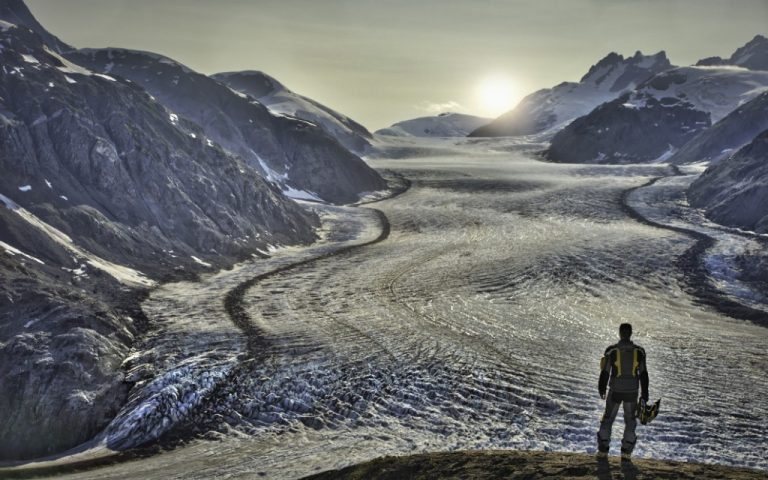Compelled to capture his own photographs of the mesmerising northern lights, Simon Thomas embarks on a goose chase across the wilderness of Alaska and Canada.
I was seven when I first saw the aurora borealis. I was sat on the couch between my parents, bored out of my skull watching some stupid ‘old person documentary’ about somewhere called Alaska. I was bored right up until the second when the night sky lit up brilliant green and waves of light danced across it.
When I saw this, I realized that magic was real. Since that night, I’ve been in awe. Fleetingly fantasizing about what it would feel like to look up and experience that magic happening above my head.
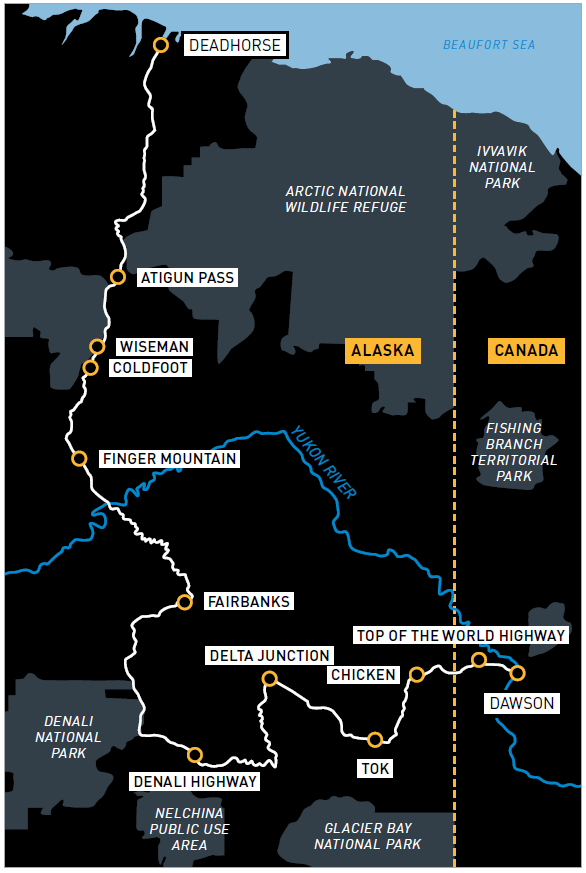
As a photographer, capturing an aurora event, well, it’s wishlist material. An impossible dream, but in the words of the late, great Muhammad Ali, “Impossible is not a fact. It’s an opinion. It’s a dare. Impossible is nothing.”
We’ve prepared for years to reach Prudhoe Bay. From as early as 2001 we’ve planned to ride to the most northerly and southerly tips on each continent. On the North American Continent, it doesn’t get much farther north than the oil fields of Deadhorse. But reaching Deadhorse isn’t going to be enough for us. We plan to photograph an aurora event.
After years of photographing ourselves, people, landscapes and events around the planet, I know one thing for sure; capturing great shots at night is a tough challenge.
Even with the right camera, the best lenses and a collection of handheld apps and modern-day wizardry, capturing an aurora borealis live requires the jigsaw pieces of the universe to all fall into place, at exactly the right moment and at exactly the right location on Earth. Lisa and I have got be in exactly the right place when it all happens. So, yeah, there’s a huge degree of luck involved.
Months ago I’d scribbled notes onto a serviette. Convincing myself that writing down the challenges would allow me to conquer them.
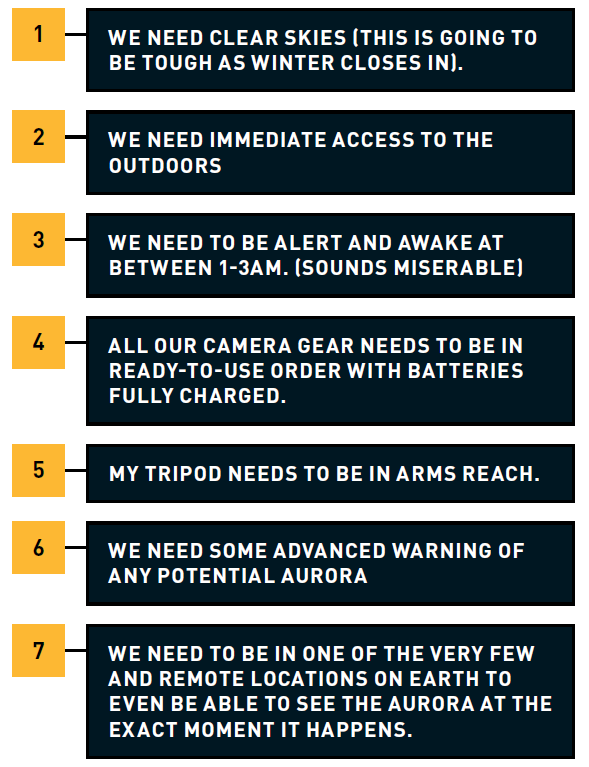
P.S. Million to one odds…I scribbled one last expletive and started to chew the pen.
OK, fast forward to the end of the year and here we are, Fairbanks, Alaska. Yeah, yeah I know, usually these articles are all about the ride, and the mountains and sharing a virtual tour of somewhere you haven’t been yet.
Well, this one’s different. This one’s as much about the journey as the destination. Sure, call me greedy, but I want more than just to ride to somewhere that between 150-200 riders make a destination every year. If you want a once in a lifetime moment, then think big and shoot for the sky. Stop groaning that pun was totally intended.
All adventures incur some risk, some danger. Reaching and riding in Alaska for Lisa and I is a fairly big risk. We’ve saved every penny we can, we’re on relatively untested new bikes and we’ve chosen to make the ride north as late in the year as we dare.
Realistically, at this point of our journey (we’ve been on the road for 13 years) we can only financially afford to ride in Alaska this once, and breaking down in Alaska could be our financial death nail. We’re also seriously at risk of being caught up here in the snow. From experience, we know that’s miserable!
The aurora borealis, or northern lights as they’re better known, are a galaxial mystery, or they were until Google and Wikipedia explained the science. Here goes…
“The bright dancing lights of the Aurora are actually collisions between electrically charged particles from the sun that enter the earth’s atmosphere”
There’s a much longer and more detailed explanation available but you get the idea. So here goes.
Basecamp
We’d spent three nights at Sven’s Basecamp in Fairbanks; with both cabin and camping options, a communal kitchen, dining area and a purpose-built computer WiFi zone, Sven’s is a great alternative to the expensive hotels that litter Fairbanks. You can find Sven’s Basecamp at GPS: N64 49.605 W147 48.475.
With every camera battery fully charged and a double-check of our gear complete, Lisa had set up her Aurora phone app to create an alarm if it predicted an Auroral event anywhere near our location.
Lucky First Night
With heavy bikes we left Fairbanks, both my R1200GSA LC and Lisa’s F800GS had been filled to the brim with fuel. We were off to a decent start with clear skies predicted.
“Could we be lucky on our first night out,” I pondered as we push past the city limits and caught our first glimpse of the Trans Alaskan Pipeline, the four-foot-wide, 800-mile long steel tube that we’ll rub shoulders with all the way to Deadhorse.
Today would only be the second time in our entire trip that we’d crossed the Arctic Circle: we’d crossed it the first time within the first few months on the road when we’d ridden up to Nordkapp (Norway) – the most northerly point in the world which you can access by road.
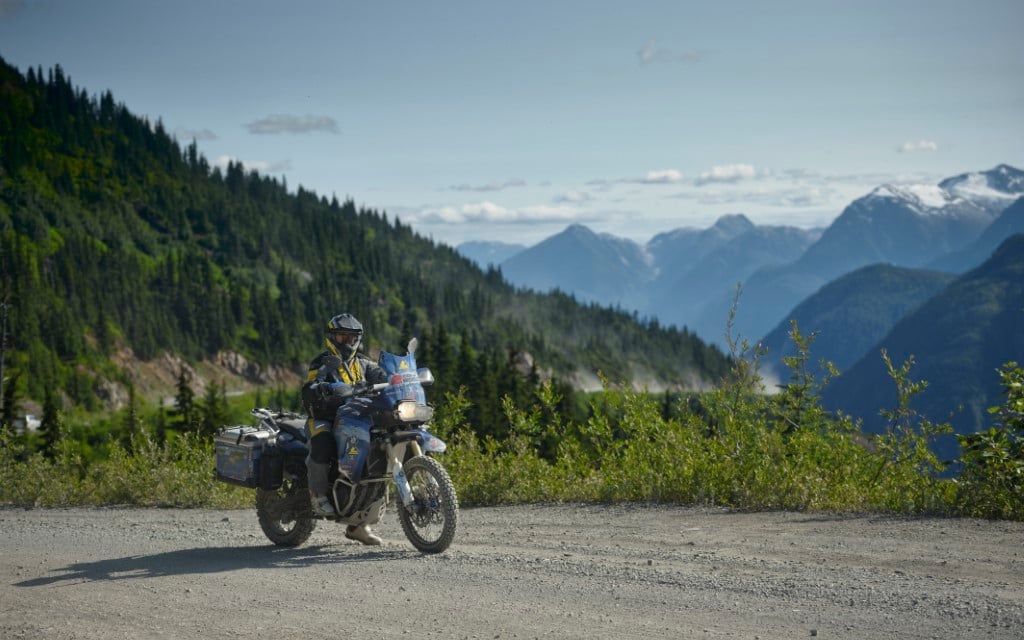
With 73 miles of twisting asphalt behind us, we slid onto the loose gravel of the Dalton Highway and sped past the ‘Mile-0’ marker. A switch in my brain was flicked; I realised suddenly, that I’ve been so focused on photographing the northern lights, that I’d not given myself the chance to really get excited about the ride ahead of us.
A road sign read ‘speed limit 50mph’. “That’s optimistic,” I thought as I smiled, opened the throttle, and clicked into fifth.
Verbal Distillation
Distil all the unforgiving and severe descriptions of the Dalton Highway, and a few keywords remain, none more appealing to Lisa and I than the word ‘remote’. This six-letter descriptive has become our drug of choice. For us, this singular word yells opportunity, and a chance to experience something rare. It is easy to create great images when you’re shooting something rare.
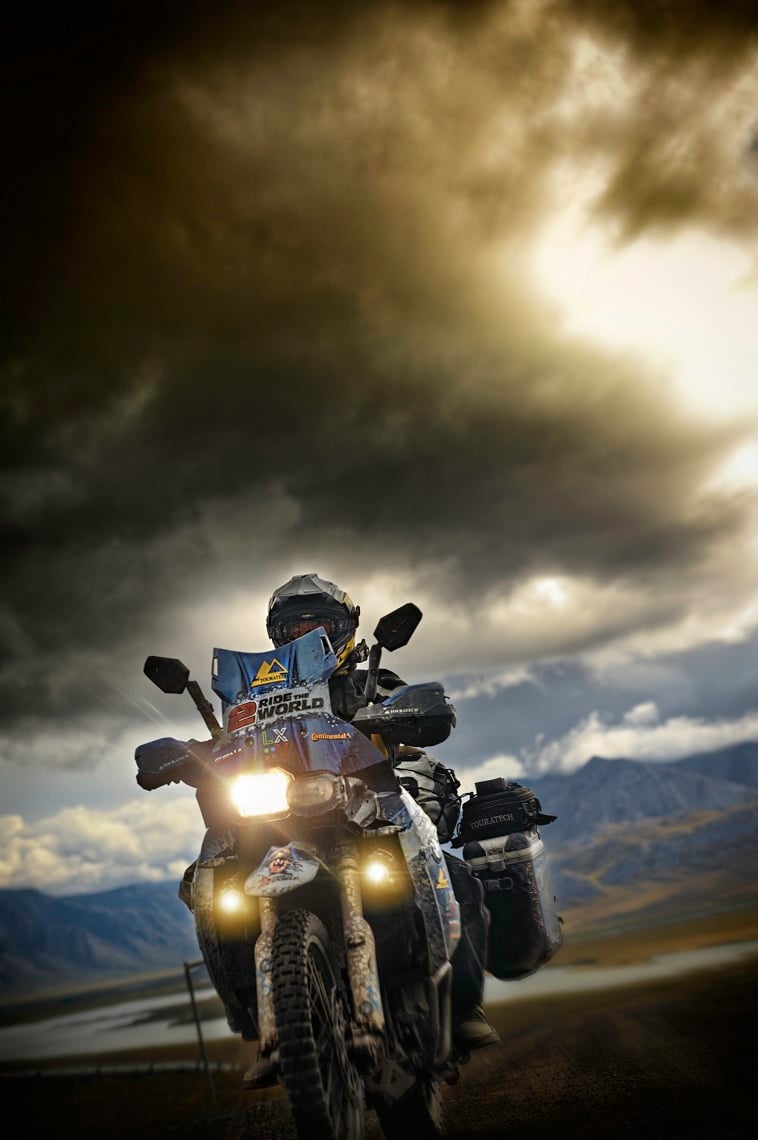
Past the Yukon River Valley and north, we skirt vast areas scorched by fire. On the horizon, the 40-foot granite tor of Finger Mountain stands like a geographical exclamation point. At mile marker 115, under a blanket of rain, we push past the Arctic Circle signpost. We’ll grab the compulsory photos on the way south and hope that the weather improves.
A wide pristine valley lay below and ahead of us. Cresting the road, I pull over, grab the camera and wave Lisa past. The GPS had confirmed we’d be in Coldfoot in the next hour. The views were too good to pass up.
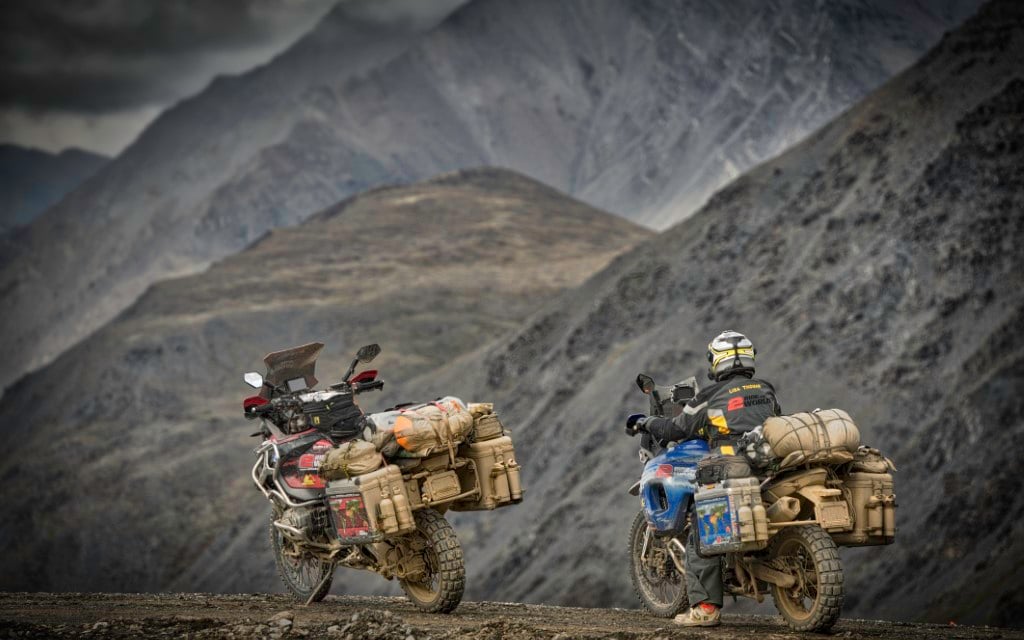
In the Coldfoot Camp parking area we slid, bounced and finally wobbled to a stop outside the main office. Inside we swallowed hard and handed over $219 for a tiny box room. The dinner buffet had been as good as we’d been told, and with heavy eyes we headed for the room.
Slapped from slumber
Outside, the chill air slapped us both awake at 2:00 am as we looked skyward, camera in hand. Around us, thick fog obscured any view. There’s nothing. Glowing in the dark, Lisa’s Aurora app is going ballistic, confirming that on the other side of the misty veil, the magic is happening, right now. Finally, at 2:45 am I concede to the cold and skulk back to the room to snatch a few hours of sleep.
The bright morning skies instantly shook off the previous night’s disappointment. The thick mud and sludge that covered the truck stop area was now almost dry. The relief was tangible. The idea of sliding for 240-miles on the snow-covered road up to Deadhorse was a miserable one.
By mid-morning we’d picked up our pace, sped past Wiseman and the turning into The Arctic National Park, an adventurers playground; eight million acres of uninhabited mountains and tundra- and over 27,000 square miles of wilderness. We made a note that we’d have to come back one day.
Riding into the clouds
Our anxiety over the Atigun Pass evaporated as quickly as last night’s fog as we reached mile 242. Lisa had researched the pass and read multiple accounts of the trek being steep, narrow, treacherous and technical. At 1,440m the Atigun is the highest ‘year round pass’ in Alaska.
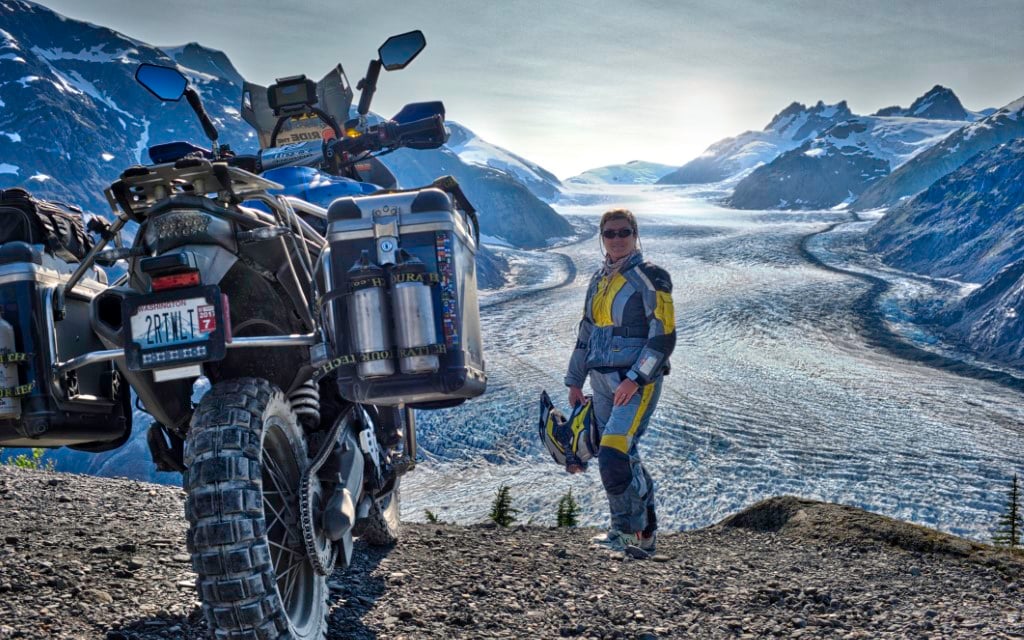
Up on the pegs, the riding was easier as we worked to find a route around the larger potholes.
The views heading up are spectacular and once at the top, they’re just jaw-dropping. We had ridden above the cloud line and stopped to take photos of our ride through the clouds. The peaks of the Brooks Mountain Range creating a perfect and dramatic backdrop.
Show me a sign
The twisting, plummeting ride to the valley below is grin-inducing and special. It was late afternoon as we hit the outskirts of Deadhorse and followed the roadwork’s pilot car, at a snail’s pace into town.
The clear bright light of the hour didn’t do much to diffuse the Stalinesque features of the community of Deadhorse. The bleak ultra-utilitarian outbuildings creating an austere first impression.
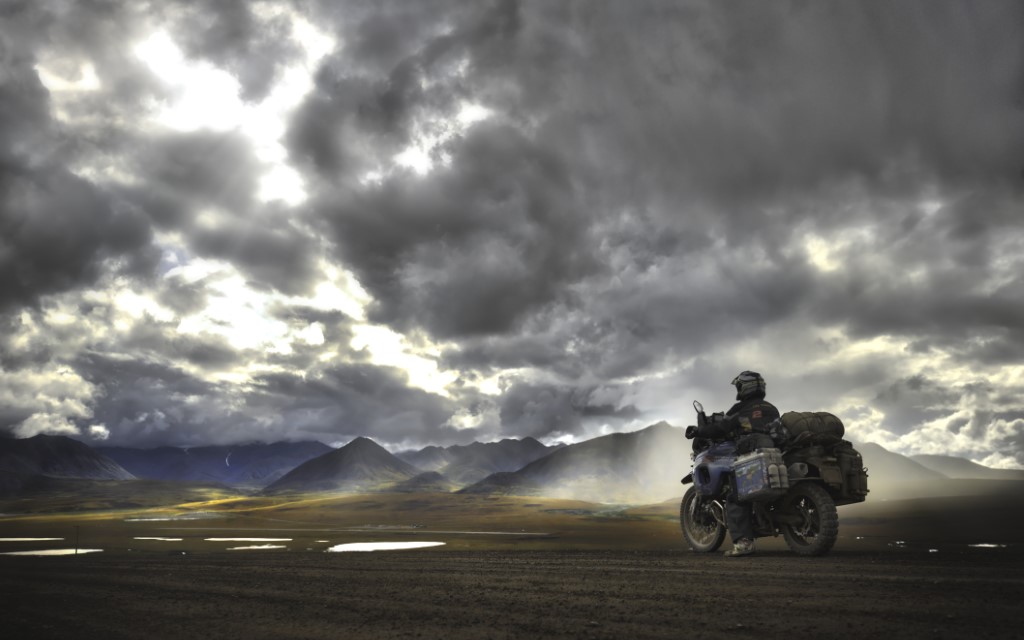
With the last room snagged at the Aurora Hotel, we headed back out on the bikes to find fuel for our ride south. At 9 pm, there was still ample light to snap one last photo. For countless years, riders have been posing in front of the now-famous Prudhoe Bay General Store sign.
At long, long last it’s our turn. We savoured the moment and lingered for far too long as we arranged the bikes and set up the tripod to capture our ‘hero’ shot. Brilliant…silly, but brilliant!
Below Zero
Alaska’s weather is deserving of its formidable reputation. In the ten minutes, it takes to ride back to the Aurora, a freezing wind and thick fog bank had replaced the clear day. The change was as ominous as it was instant. We knew there was little chance of photographing the aurora borealis this far north in August; the night just doesn’t get dark enough. With the change in the weather, we had to accept that there was zero chance!
The ride south from Deadhorse was more vibrant and dramatic than the ride north. Rolling thunderclouds erupted around us, drowning the landscape and, by some miracle, leaving us dry. The images we snapped that day are amongst my favourites.
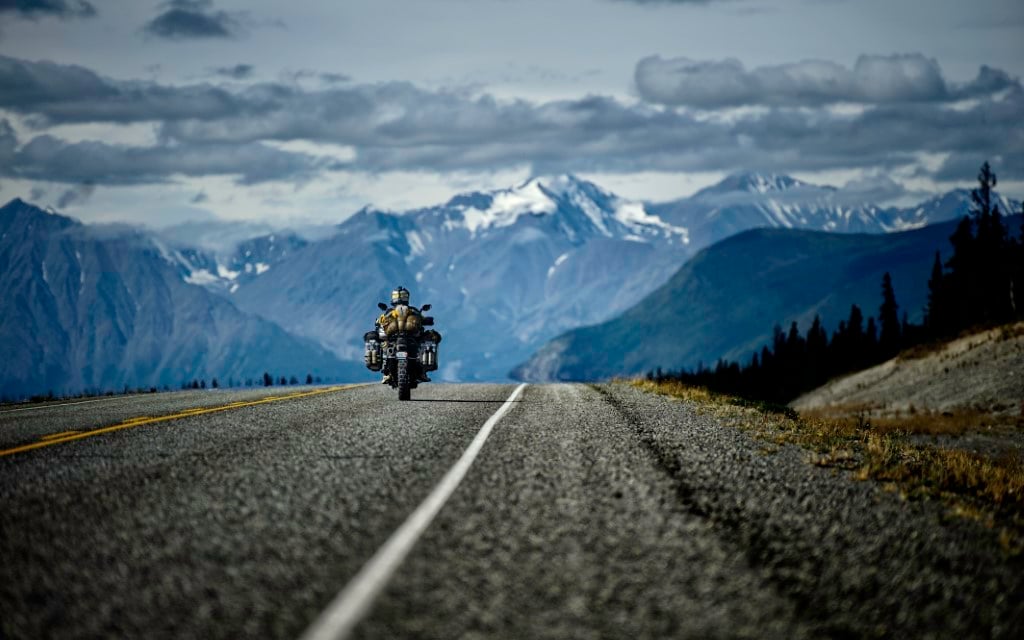
A week after waving adios to Deadhorse, we were riding back into Tok, Alaska, at GPS: N63 20.336 W142 59.388, which resembles a ghost town more than it does a small vibrant gateway town that we’d stayed in riding north. We cleaned ourselves up, recharged all our electronics and planned our ride northwest.
Our ride had been stunning, but there was no ignoring the aching disappointment that the Aurora experience had eluded us. The Denali Highway and National Park were a highlight of our northern excursions but dark and brooding weather had hidden any night skies.
Chillin’ in Chicken
“September 1st,” Lisa yelled in response to my question. We were on the ‘Top Of e World Highway’, a band of easy, fast asphalt that took us from Alaska and back into Canada’s Yukon Territory. In Chicken we’d parked up, scoffed a chicken pie, well, you have to don’t you, and grabbed the mandatory photos.
It was all too easy think about lingering. Chicken has a distinct and alluring charm that whispers, “stay, chill out, camp for a month and take a breath”. You can find Chicken at GPS: N64 04.043 W141 56.614.
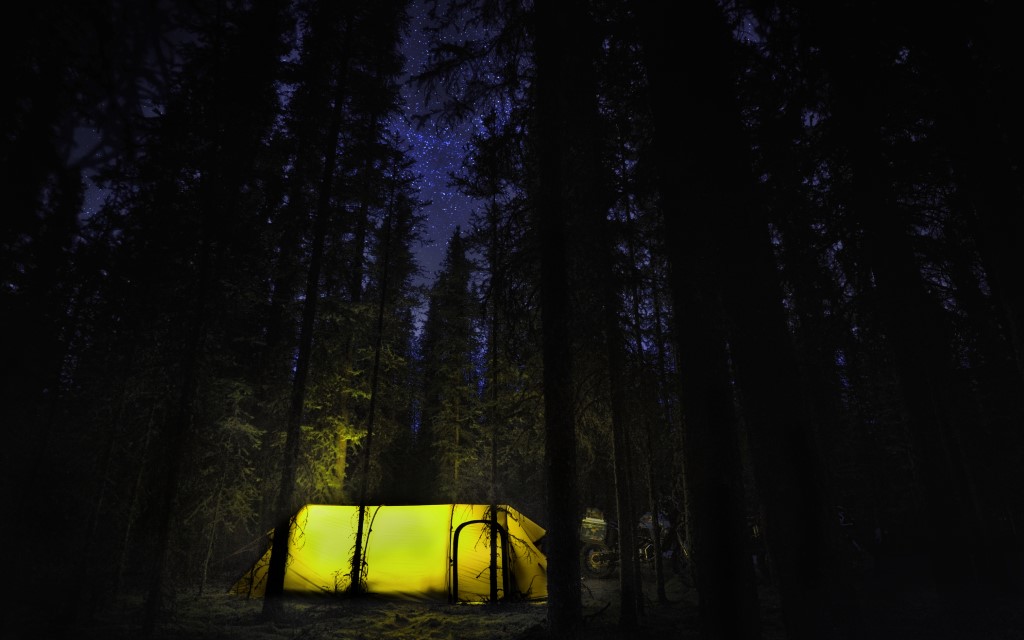
Back on the bikes we’d pushed upward and east and swapped the ‘Top Of The World Highway’ for the less dramatically named ‘Taylor Highway’. At the summer-only border control point, we rolled to a stop.
Wearing dark sunglasses and a smile, Hilary had taken our passports stamped us into Canada and chatted easily about her three-month rotation coming to an end. She was looking forward to heading south and seeing her family. With our papers returned and stuffed in a pocket we rolled easily back into the Yukon.
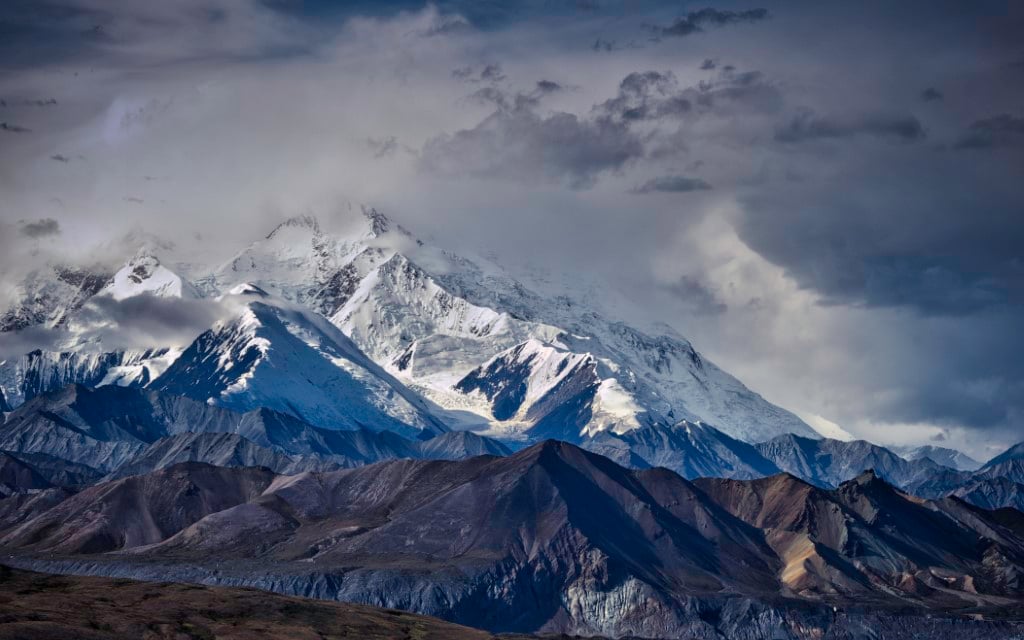
With the day closing out, we made our way down to the George Black ferry (at GPS: N64 04.344 W139 26.397), rode onto the worn metal deck and were delivered to the legendary gold rush town of Dawson City. Lisa had booked us a one-night stay at the aptly named Bunk House, a three-storey wooden building with rooms of miniature Japanese proportions.
Unexpected Magic
Sat in the small bar next door, we sipped on two large rum and cokes and replayed the incredible ride of the last four weeks. With a sigh and sip, we conceded that the Aurora Borealis was an experience for the future.
Outside the bar, we were caught off guard to see how dark it had become so quickly. We’d become so blasé about sunsets at 11:30 pm that we’d taken the light for granted. Somewhere deep in Lisa’s pocket, her phone was bleeping. “Who’s calling you?” I asked Lisa, frustrated by the interruption.
As Lisa dug out the phone, my eyes roll skyward as a shimmering green wave of light danced briefly across the sky. I grabbed Lisa; span her around, yelled, and pointed. Her Aurora alarm was still bleeping.
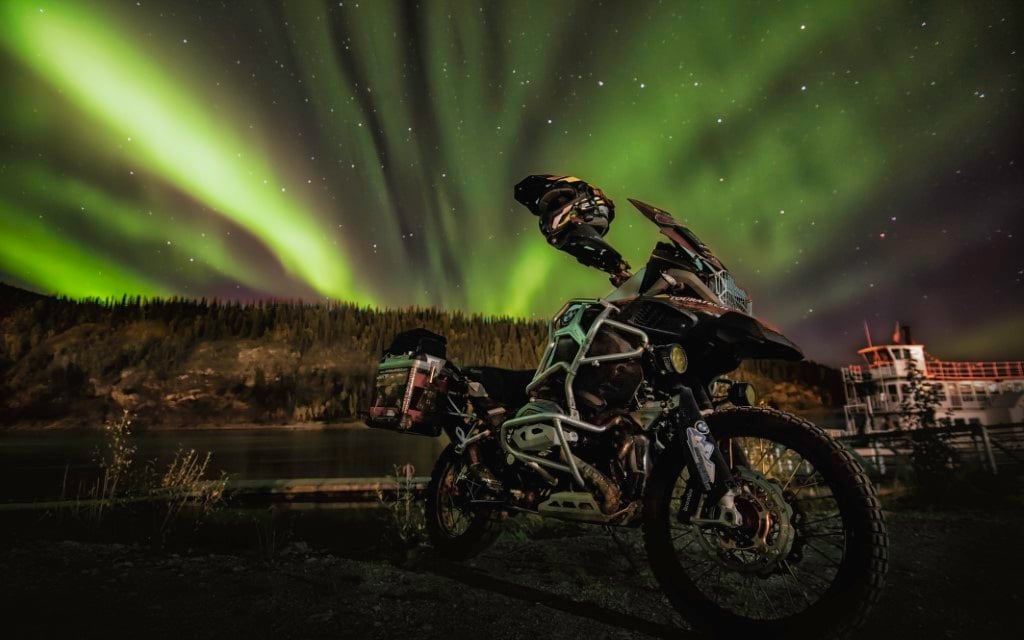
It’s 2:00 am and we’re sat on the dark banks of the Yukon River. Behind us, the dim lights of Dawson City send a blush into the night. I click the lens of my camera as another curtain of rippling magic light paints the sky in shades of fluorescent green. The entire sky is a swirling light show of biblical proportions. Lisa hasn’t stopped smiling for the last three hours in spite of the bitter drop in temperature.
For the first 30-minutes of this shoot, I’d played and experimented with camera and exposure settings, before feeling happy. After an hour, the first Nikon battery was exhausted. With exposure of 8-20 seconds, and sub-zero temperatures my trusty D3 is getting a workout.
With the second battery slowly showing signs of fatigue, Lisa and I turn off the camera and hold hands in the dark. We say nothing and stare at the sky until daybreak. Parts of our journey will always be special, rare and unique. Tonight’s unexpected experience will always be ours and the images we’ve captured are precious. It’s good to believe in magic again, the world’s a better place for it.
Now, go and chase your dream…
5 tips for seeing the Northern Lights
1. Dark Skies
The sky must be dark, so it’s best to give the mid-summer months a miss if you’ve got any aspirations of seeing the world’s greatest light show. You can’t see the aurora through the cloud, so increase your chances by heading to a location that’s known for minimal rainfall.
2. Not too far North
You’d be forgiven for thinking the further north you ride, the more chance you have of seeing the northern lights. The aurora is most visible beneath the ‘aurora oval’, a band which encircles the Earth between 60 and 70 degrees of latitude.
3. Follow the forecast
Keep an eye on the aurora forecast (www.gi.alaska.edu/auroraforecast). Northern lights forecasting is, in the short term very accurate because the solar particles that produce the aurora take two or three days to reach Earth.
4. Wrap Up
Dress warm. The lights are an unreliable date and can keep you waiting or even stand you up completely. You’ll be far more comfortable waiting in the cold if you take measures to wrap up warm.
5. Make other plans
The aurora is fickle, and it may not appear, so make plans to keep yourself busy and entertained during the daytime while you wait. If you miss the aurora, then at least you can think back fondly on the awesome riding you did while attempting to see it.


